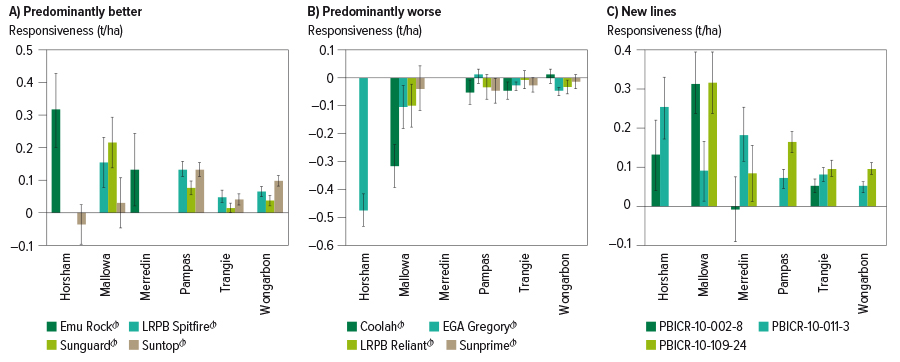Fusarium crown rot tolerance is important, but the ideal wheat variety will also yield well in the absence of disease.
Selecting a wheat variety with good tolerance to Fusarium crown rot is an important risk-management strategy. But these varieties must also be yield-competitive when crown rot is not present and in wetter, high-yielding seasons when expression of the disease is limited. Under dry conditions during grain filling, Fusarium crown rot can devastate cereal yields, but in good seasons the same level of inoculum can be almost benign.
The ultimate goal is a variety that matches high-performing varieties in the absence of Fusarium crown rot infection and/or expression, but has sufficient tolerance to yield well in the presence of infection under drier seasonal conditions.
National trials
Critical to GRDC’s investment in Fusarium crown rot research is the need to evaluate variety performance in both the presence and absence of infection.
In 2018, GRDC’s national Fusarium crown rot program, coordinated by the New South Wales Department of Primary Industries, compared 16 to 20 genotypes of existing wheat varieties, near-release varieties and elite Fusarium crown rot pre-breeding lines developed by the University of Sydney.
The trials in Queensland (Pampas), NSW (Mallowa, Wongarbon and Trangie), Western Australia (Merredin) and Victoria (Horsham) compared genotypes grown in the presence or absence of applied Fusarium crown rot inoculum.
A new statistical method was utilised to assess ‘responsiveness’, or a variety’s ability to maintain yield when infected by Fusarium crown rot, independent of the variety’s yield potential in the absence of the disease.
The widespread dry conditions made 2018 an ideal season to look at the impact of Fusarium crown rot on crop yield, with the average yield loss across genotypes ranging from 19 per cent at Wongarbon to up to 63 per cent at Pampas.
Responsiveness
Wheat varieties vary considerably in their responsiveness to Fusarium crown rot infection, which can substantially affect yield performance and profitability between locations.
Figure 1: Responsiveness (t/ha) measures a variety’s ability to perform when infected with Fusarium crown rot, independent of the variety’s yield potential, and is calculated as the deviation (positive or negative) from the average genetic response to Fusarium crown rot in a trial. A) Existing varieties that perform predominantly better than the average in the presence of crown rot, or B) predominantly worse, and C) new lines that perform predominantly better.

Source: Clayton Forknall
Planting wheat varieties with predominantly positive responsiveness to Fusarium crown rot (see Figure 1A), can maximise returns in paddocks with a medium to high risk of infection based on PREDICTA® B or other appropriate testing. Conversely, wheat varieties with predominantly negative responsiveness to Fusarium crown rot (see Figure 1B) should only be considered in paddocks known to have a low level of risk.
Encouragingly, three of the Fusarium crown rot pre-breeding lines (see Figure 1C) had consistent, predominantly positive responsiveness to Fusarium crown rot across the majority of sites, and PBICR-10-011-3 was consistently positive at all six trial locations across Australia.
However, variety choice should not be based on responsiveness to Fusarium crown rot alone.
Yield potential within an environment remains an important consideration. For example, Sunguard had positive responsiveness to Fusarium crown rot at Mallowa and LRPB Hellfire had negative responsiveness, yet both had a similar yield in the presence of infection. However, in the absence of Fusarium crown rot infection Sunguard (1.7 tonnes per hectare) was lower-yielding than LRPB Hellfire (2.1t/ha) in that environment.
The pairing of genotypes displaying both consistent positive responsiveness to Fusarium crown rot infection and greater yield potential in the absence of infection, such as the new lines in development, will aid in maximising profitability in the presence of crown rot infection.
More information: Dr Steven Simpfendorfer, 0439 581 672, steven.simpfendorfer@dpi.nsw.gov.au

























































